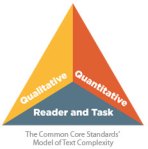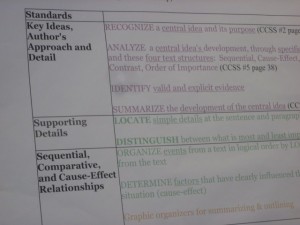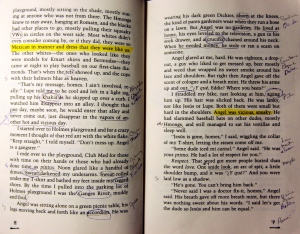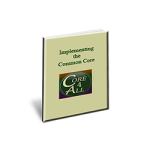 The March 2012 Educational Leadership publication popped through my mail chute and I was thrilled to read its title: READING ~The Core Skill~. As an English teacher and reading specialist, I have always believed that reading is the essence, the core, of all learning, in all grades, in all disciplines. This issue of Educational Leadership features numerous articles discussing aspects of reading research and practice for 21st Century teachers and learners. As I pondered the ideas presented by literacy experts such as Tim Shanahan, Nancy Fry, and Richard Allington, one major question came to mind:
The March 2012 Educational Leadership publication popped through my mail chute and I was thrilled to read its title: READING ~The Core Skill~. As an English teacher and reading specialist, I have always believed that reading is the essence, the core, of all learning, in all grades, in all disciplines. This issue of Educational Leadership features numerous articles discussing aspects of reading research and practice for 21st Century teachers and learners. As I pondered the ideas presented by literacy experts such as Tim Shanahan, Nancy Fry, and Richard Allington, one major question came to mind:
How can Professional Learning Teams, busy with the day-to-day schedule of planning, teaching, grading, and team meetings, effectively merge the Common Core’s emphasis on text complexity with skill instruction that equips students to comprehend and analyze these complex texts?
Let’s examine what the Common Core writes about text complexity. According to the Common Core,
One of the key requirements of the Common Core State Standards for Reading is that all students must be able to comprehend texts of steadily increasing complexity as they progress through school. By the time they complete the core, students must be able to read and comprehend independently and proficiently the kinds of complex texts commonly found in college and careers.
Anchor Standard 10 Grades 6-12: Range of Reading and Level of Text Complexity. Read and comprehend complex literary and informational texts independently and proficiently.
In Grades 6 – 12, this Anchor Standard for Reading is tailored for each content area of English Language Arts, History/Social Studies, Science and Technical Subjects.
My initial question then divided into three prongs as I contemplated how Professional Learning Teams can determine text complexity while planning curriculum.
- What exactly is text complexity?
- How can my PLT accurately measure text complexity for our content area?
- How will my PLT select materials that enable students to climb the staircase of text complexity?
What exactly is text complexity?
The Standards Model of Text Complexity consists of an equilateral triangle divided into three obtuse triangles comprised of Qualitative, Quantitative, and Reader and Task. Following is a summary of each obtuse triangle.
Features of qualitative include:
Level of Meaning for literary text or Purpose for informational text: The text with a single level of meaning and straightforward purpose would be easier to comprehend than a text with multiple levels and a purpose that must be inferred.
Structure:
Is the structure simple and chronological? Or is the structure more complex? Do graphics clearly contribute to the meaning of the text? Or, do graphics demand the reader’s interpretation?
Language Conventions & Clarity:
Is the language literal or figurative? Is the language contemporary or archaic?
Knowledge Demands:
Does the text rely on everyday life experiences or content specific knowledge?
Qualitative characteristics refer to the quality of the text and are the most challenging to ascertain. The PLT must combine qualitative components with professional judgment when assessing the qualitative measure of a text.
Qualitative Components = Quality of a text
Features of quantitative include:
- Word length and frequency of words
- Sentence length
Quantitative Components = Computable features of a text
Features of Reader and Task
- Background knowledge
- Motivation
- Students’ reading proficiency
Reader and Task = Student plus text
How can my PLT accurately measure text complexity for our content area?
For many years, my staff development partner and I introduced teachers to readability formulae such as Frye and Raygor, based on word length, syllable count, and sentence length. After completing a series of steps counting both the words and the sentences, the results were plotted on a graph that purported the “readability” (grade level range) of a text. There are clearly limitations to the readability formulae, for text complexity cannot be simply ascertained by numerical operation.
Rather, the PLT should utilize the lexile analyzer to compute the complexity of a text. Common Core refers to text complexity grade bands and corresponding lexile ranges for each grade band.
|
Text Complexity Grade Band |
Lexile Ranges |
|
6 – 8 |
995-1155 |
|
9 – 10 |
1080 – 1305 |
|
11 – CCR |
1215 – 1355 |
- Refer to CCSS Appendix B for text exemplars. Theses exemplars are by no means a national reading list, but rather suggested texts that satisfy the components of the triangle of Text Complexity.
- Compare and contrast texts selected by your PLT to text exemplars to determine similarities and differences.
- Systematically analyze text by measuring qualitative and quantitative characteristics as well as ascertaining the reading skills of your students.
Summary
As you can see, text complexity is truly a muti-faceted issue as educators work to prepare students for college and career readiness. By understanding the components of text complexity and working with your PLT to select appropriate texts, your team will be on its way to helping students comprehend and analyze complex texts.
Stand by for a future blog: Strategies to enable students to skillfully read and comprehend increasingly complex texts.
(picture from lexile.com)






















